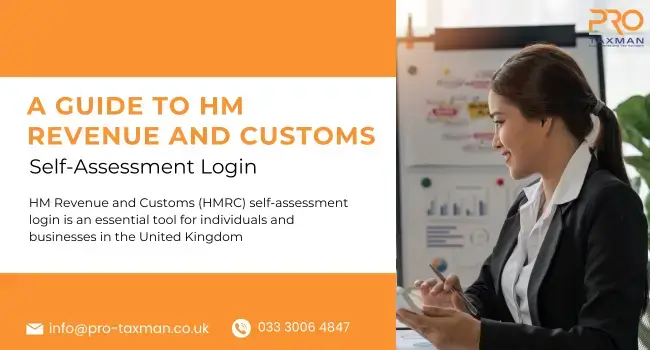HM Revenue and Customs (HMRC) self-assessment login is an essential tool for individuals and businesses in the United Kingdom to manage their tax affairs efficiently. Whether you’re a freelancer, sole trader, or a corporation, navigating the HMRC portal is crucial for fulfilling tax obligations accurately and on time. In this guide, we’ll walk you through the process of accessing your self-assessment account, making tax payments, and staying compliant with HMRC regulations.
1. Understanding Self-Assessment:
Self-assessment is the system used by HMRC to collect income tax from individuals and businesses. It requires taxpayers to report their income, gains, and other financial details annually. The process involves completing a tax return form, either online or on paper, and submitting it to HMRC.
2. Creating an HMRC Online Account:
To access HMRC’s self-assessment services online, you need to create an HMRC online account. Visit the HMRC website and follow the instructions to register. You’ll need your National Insurance number and other personal details to verify your identity.
3. Logging In:
Once you’ve created your account, logging in is straightforward. Visit the HMRC website and enter your user ID and password. You may also need to provide additional security information, such as a code sent to your mobile phone or email address.
4. Accessing Self-Assessment Services:
Once logged in, you can access a range of self-assessment services, including:
- Completing and submitting your tax return.
- Viewing your tax calculation and liabilities.
- Making tax payments.
- Checking your payment history.
- Updating your personal details.
5. Completing Your Tax Return:
Navigating the tax return form can seem daunting, but HMRC provides guidance at every step. You’ll need to report various types of income, including employment income, self-employment income, rental income, and investment income. Make sure to have all relevant documents and records handy.
6. Making Tax Payments:
If you owe tax, you can make payments securely through the HMRC portal. You can choose to pay immediately using a debit or credit card or set up a direct debit for future payments. HMRC also offers alternative payment methods, such as bank transfers and cheque payments.
7. Deadlines and Penalties:
It’s crucial to meet HMRC’s deadlines to avoid penalties. The deadline for filing your tax return and paying any tax owed is usually January 31st following the end of the tax year. Failure to meet deadlines can result in financial penalties and interest charges.
8. Seeking Assistance:
If you encounter any difficulties or have questions about self-assessment, HMRC provides various support options. You can access online guides, contact HMRC’s helpline, or seek assistance from a tax advisor or accountant.
Conclusion:
Managing your tax affairs through HMRC’s self-assessment portal is a fundamental aspect of financial responsibility for individuals and businesses in the UK. By understanding how to access your account, complete your tax return, and make payments, you can ensure compliance with tax regulations and avoid unnecessary penalties. Stay informed, stay organized, and make the most of HMRC’s online services to streamline your tax obligations.

